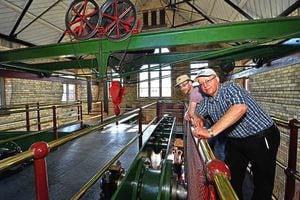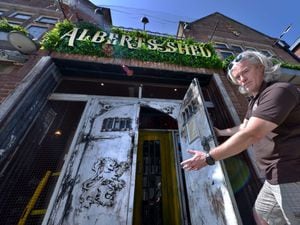Historic Shrewsbury pump in open day
An historic landmark threw open its doors at the weekend to give people a rare peak inside.

Coleham Pumping Station, in Shrewsbury, played a key role in the town's sewage system up until 1970 when its steam powered pumps were replaced by electric technology.
But thanks to a team of dedicated volunteers, dozens of steam enthusiasts and intrigued members of the public who visited on Sunday got to experience what it would have been like when the beam engines were powered up and pumping the town's sewage to Monkmoor.
Built in the late 1800s and operational from 1901 to 1970, the pumping station is the lowest part of the town. It was built to look like a Victorian chapel from the outside.
Ian Payne, a volunteer with the Shropshire Steam Trust, which maintains the engines and pumps on behalf of Shropshire Council, said: "In the late 1800s there was a problem in Shrewsbury and that was the smelly river.
"The council decided to do something about it. At the same time, London was being given new sewers so Shrewsbury did the same.
"Everything in the curve of the river was diverted from being dumped in the river through pipes to this building.
"At the same time, the sewage farm at Monkmoor was built to help deal with the problem. These pumped sewage along Monkmoor Road. This piece of land does the same job but this building does not deal with sewage anymore. Now, once a week, a man from Severn Trent pops in and looks at the filters.
"Before, it was 24/7 with three men here. It is part of Shrewsbury's history. Without it, the town would be a very smelly place. The responses we usually get when we open it up is 'wow'.
"Most people that are steam buffs know what to expect but if you come in off the street, you don't know what is in it.
"Lots of people have been interested in the history but what we can't really answer is the who as we don't know much about the staff that were here when it was operational.
"During normal operations you would have had one engine going but during periods of high demand such as wet weather you would have had both engines going."





